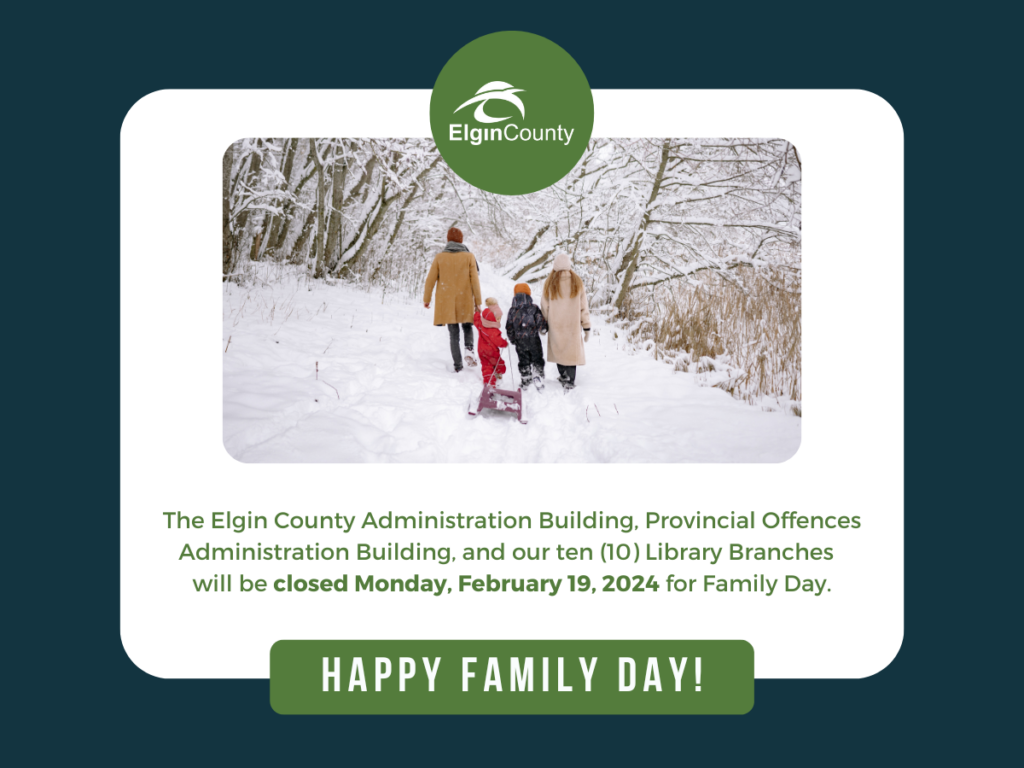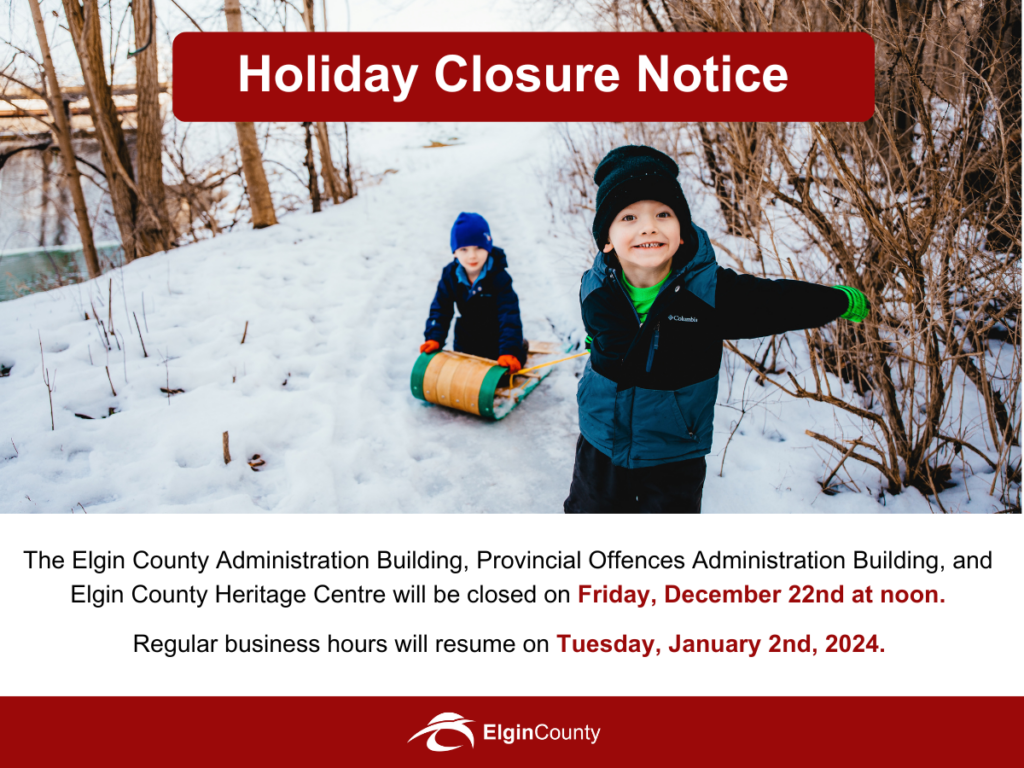2024 Total Solar Eclipse
Astronomers and sky gazers are bracing for the astronomic event of a lifetime. Mark your calendar! On April 8, 2024, Elgin County and a lucky few areas in southern Ontario will witness a total solar eclipse. The last total eclipse experienced in the province was February 26, 1979, in Northern Ontario, and the next one won’t happen again over the province until 2099.
People usually have to travel to the other side of the planet if they want to see a total solar eclipse, but this year you will have a chance to see it right here in Elgin County.
What is an eclipse?
An eclipse occurs when one astronomical object, such as a moon or planet, moves into the shadow of another one.
What is a solar eclipse?
The Moon orbits around the Earth, and sometimes the Moon is between the Sun and Earth. When this happens, the Moon blocks the light of the Sun from reaching Earth, causing a solar eclipse. During a solar eclipse, the Moon casts a shadow onto Earth.
What is a total solar eclipse?
A total solar eclipse is only visible from a small area on Earth. The sky becomes very dark, as if it were night. For a total eclipse to occur, the Sun, Moon and Earth must be in a direct line. Total solar eclipses roughly take place once every 18 months.
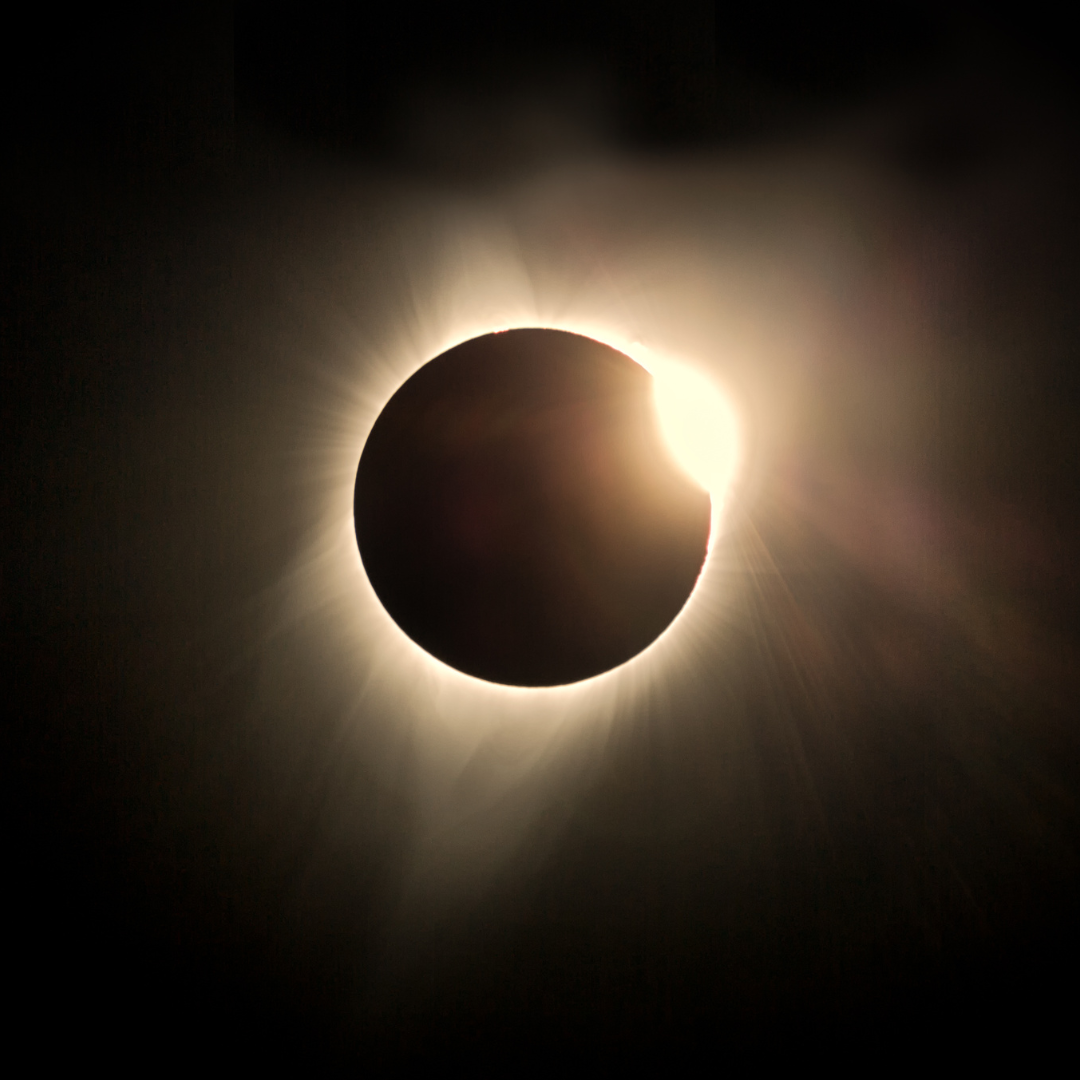
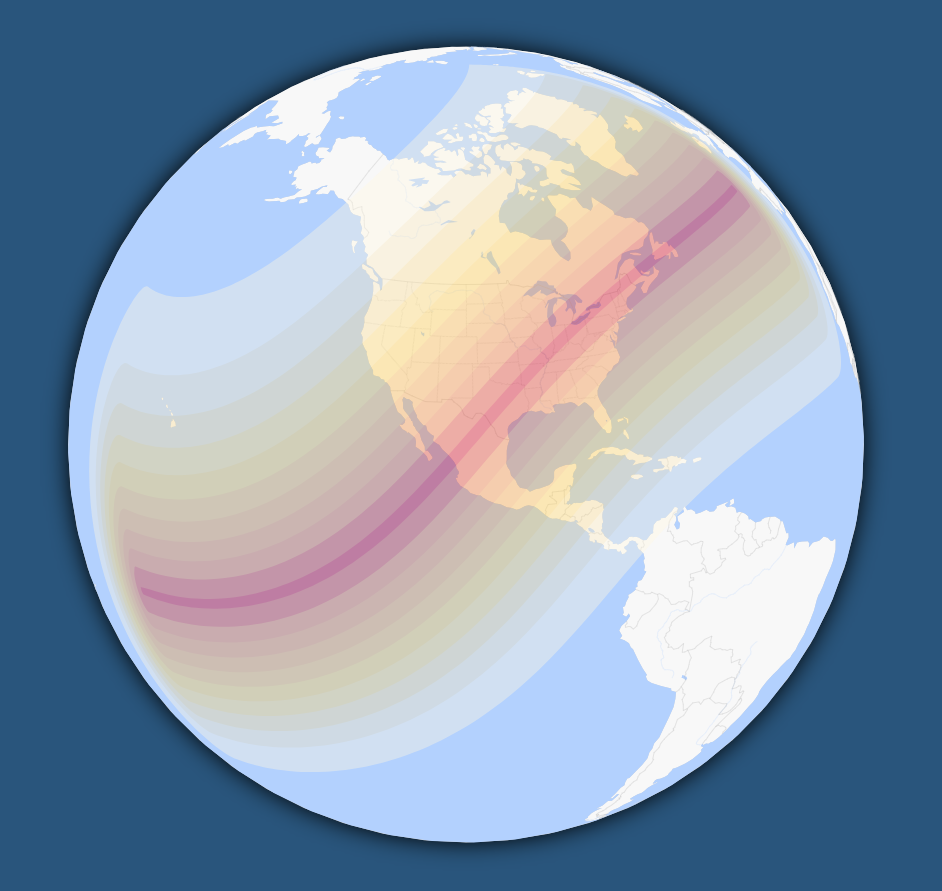
Where can you view the eclipse?
Total solar eclipses are only visible within a narrow path. In order to witness the full eclipse, you must be located in this path of totality. Elgin County lies directly in this path, making it a prime viewing location.
When can you view the eclipse?
The total solar eclipse will take place on Monday, April 8th, 2024 from approximately 2:00pm – 4:30pm, depending on the specific viewing point.
Time left to eclipse in Elgin County
Days
Hours
Minutes
Seconds
Total solar eclipse path in Ontario
The total solar eclipse path is between the solid red lines. The dotted red line marks the centre of the path. Anyone located in the total eclipse path will have a chance to see the total eclipse, weather permitting. For locations close to the centre of the path, the total eclipse will last longer than those near the outer edges of the path. Viewers outside the path will not experience a total solar eclipse, but they may still see a partial eclipse.
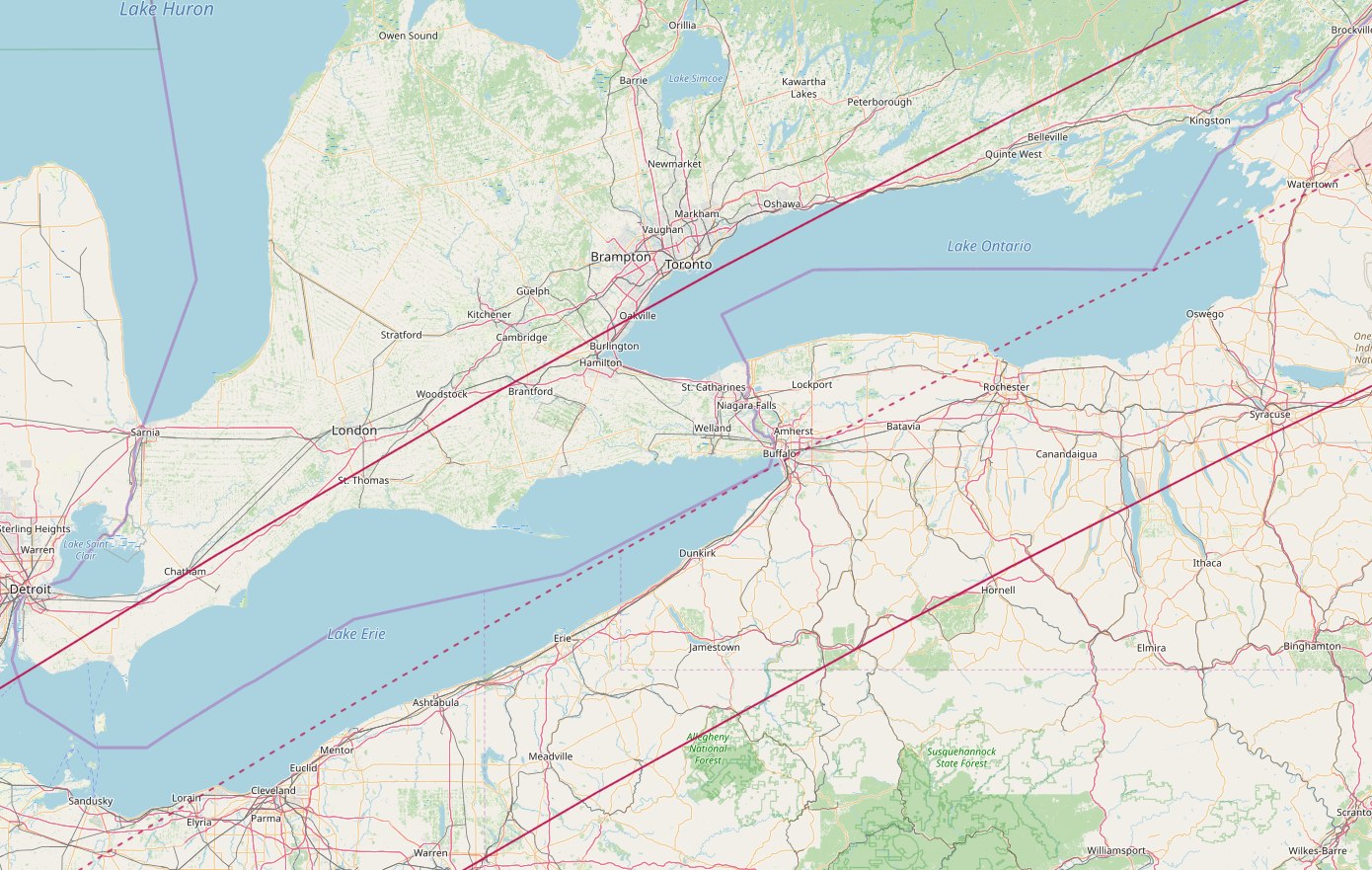
How can you safely view the eclipse
You should never look directly at the Sun, eclipsed or not, without proper protective eyewear as the Sun’s radiation can be incredibly damaging.
During a partial or total solar eclipse, looking directly at the Sun is unsafe at all times, except during the brief totality phase when the Moon is entirely blocking the Sun’s face. It will suddenly get very dark when totality is taking place.
During the other phases of the eclipse, it is only safe to look directly at the Sun through special-purpose solar glasses.
The protective gear must pass safety standards. Here is a list of manufacturers that have been approved to sell eclipse protection:

Viewing the total solar eclipse in Elgin County
Elgin County is located directly in the path of totality for the upcoming April 8th total solar eclipse. If you live or work in Elgin County, you can view the eclipse right where you are. If you live outside Elgin County, our four ports (Port Burwell, Port Bruce, Port Stanley and Port Glasgow) are all great viewing opportunities. Alternatively, the John E. Pearce Provincial Park in Wallacetown has public open spaces and parking where you can experience the eclipse.
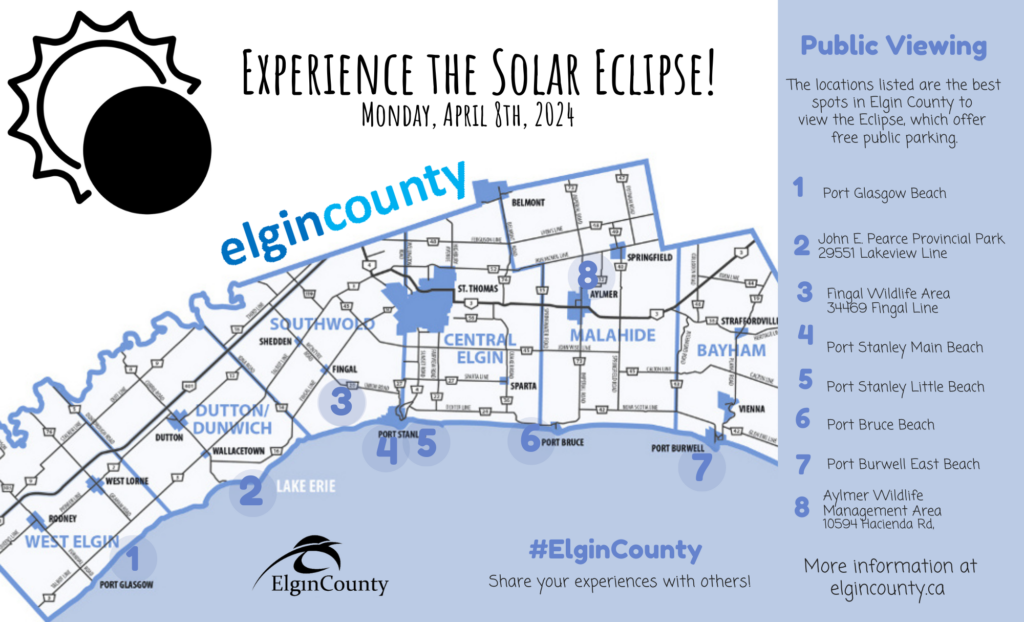
Local eclipse timelines
Visit Time and Date for an interactive map that shows the visibility of the total solar eclipse on April 8, 2024. You can select any location to see the local type, date, and time of the eclipse. See how this eclipse looks where you live.
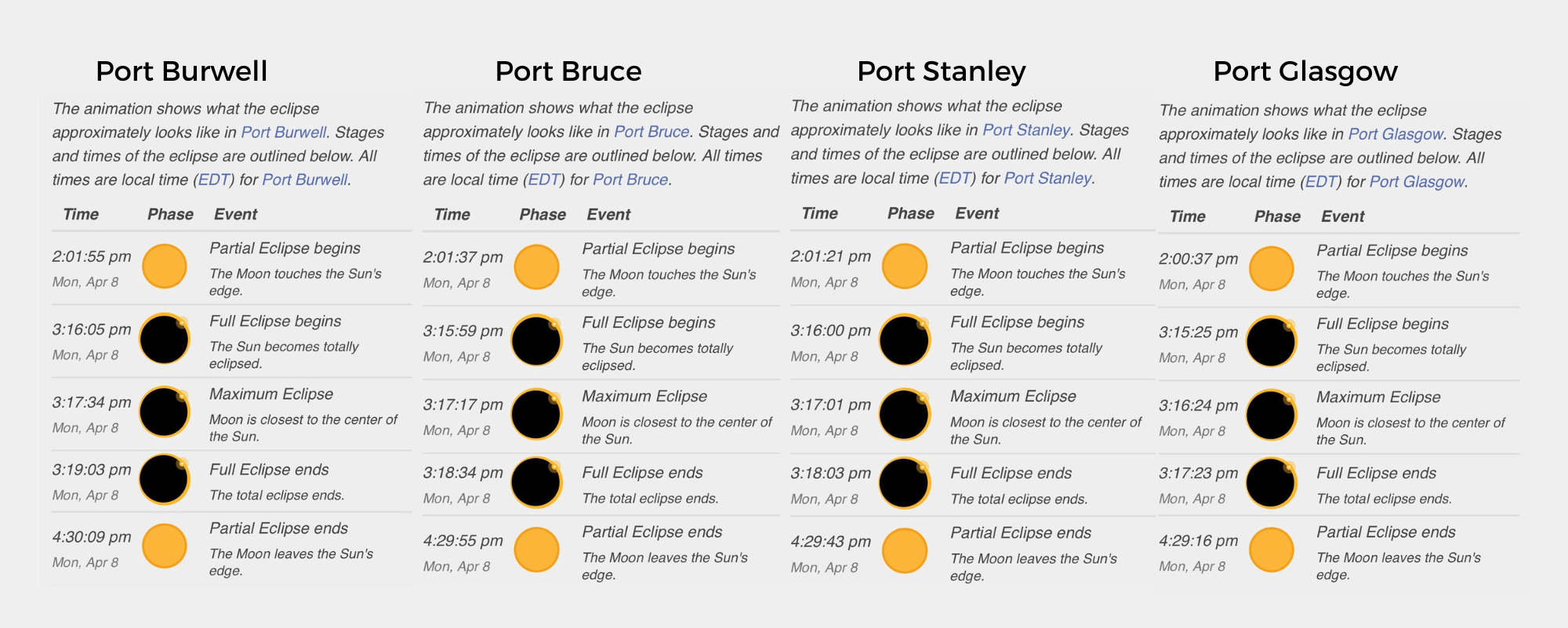
Beyond the eclipse: Explore more of Elgin County
While you’re here for the eclipse, why not extend your adventure and discover Elgin County? Our Visitor Guide is your ultimate companion, packed with information on must-see spots and activities to enhance your experience. From historical landmarks to nature trails, there’s something for everyone to enjoy.
And for those with a taste for culinary delights, explore the flavours of Elgin County with our Taste Guide. Indulge in local delicacies, savor local vintages and handcrafted brews, and explore the vibrant food scene.
While you plan your eclipse adventure, don’t miss the chance to enjoy all that Elgin County has to offer. Whether you’re passionate about astronomy, history, nature, or food, you’ll find a wealth of wonderful experiences beyond the eclipse itself.


How to capture the total solar eclipse?
When shooting images or videos of a solar eclipse, one rule is paramount: special-purpose solar filters must always remain on cameras and telescopes during the partial phases. Only during totality is it safe to remove them.
The specific camera you will need depends on the detail you are hoping to capture. If you are not particularly interested in close-up shots of the eclipse, a point-and-shoot camera will work just fine. In order to capture close-up images of the eclipsed Sun, you will need a digital single-lens reflect (DSLR) or a mirrorless interchangeable-lens camera (ILC) with a telephoto lens.
A normal (55-mm) or wide-angle (35-mm to 17-mm fisheye) lens will take in the overall scene, but will not capture the coronal detail during totality. In order to capture a moderately large eclipsed Sun and outer corona, you will need a lens with a focal length of at least 300mm. In order to capture a close-up of Baily’s Beads, the diamond ring, the chromosphere, prominences and the inner corona, a 1000-mm telephoto (or longer) is recommended.
How can you safely capture the eclipse?
Aside from when the eclipse is in totality, a safe solar filter is required on binoculars, telescopes and cameras. Solar filters for optics are designed to go over top of and cover the aperture of telescopes, binoculars and cameras.
Here is a list of manufacturers that produce safe solar filters:
- Alpine Astronomical
- Astro-Physics Inc.
- DayStar Filters
- Kendrick Astro Instruments
- Orion Telescopes & Binoculars
How can you shoot the eclipse in totality?
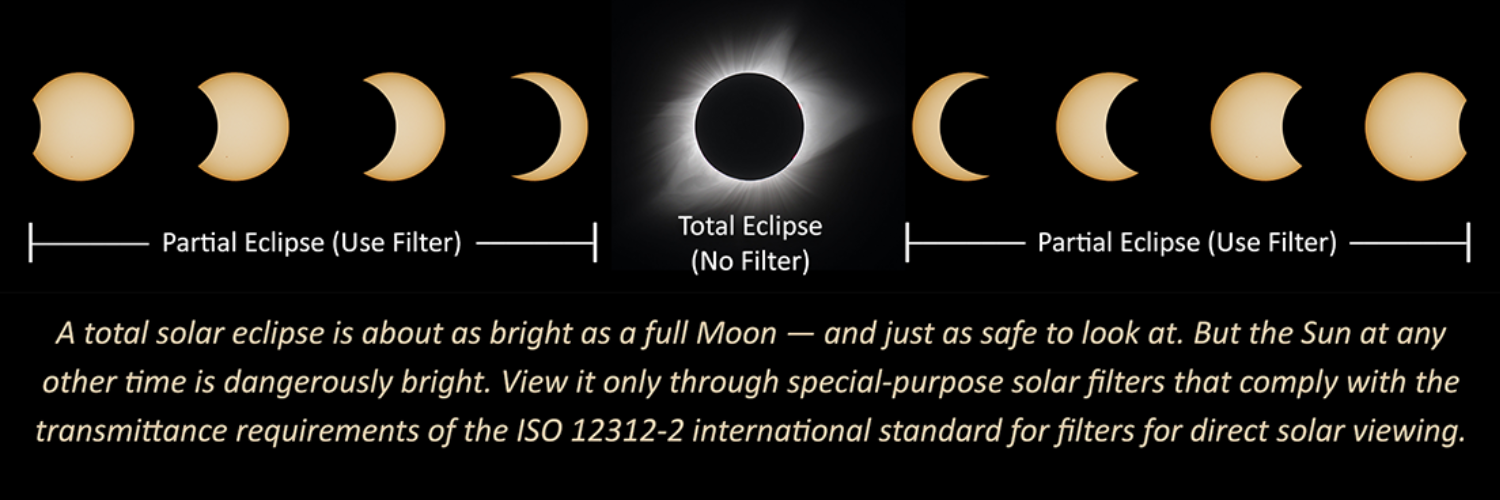
Before beginning to shoot totality, make sure you remove the solar filter that is required during all other phases of the eclipse. If not, all you will capture is darkness.
Due to the rapid changes during totality, it is essential that you decide on the f-stop/ shutter-speed combination that you want to use and preset your camera accordingly.
During totality, the Sun’s brightness varies drastically, meaning that one exposure cannot be used during its entirety. It is recommended that you shoot a sequence of exposures, using a fixed f-stop, that range from short to long ones.
Exposure Counts:
During the thin-crescent phases shortly before and after totality, you may want to increase the exposure by as much as one f-stop
If there is a slight bit of haze or clouds in the sky, on the day of the eclipse, you may need to bracket by several f-stops.
General Tips for Capture the Eclipse:
- Make sure your flash is off.
- Turn off the camera’s digital zoom.
- Use the highest image-quality setting on your camera.
- Have an extra battery and memory card with you.
- Bring a flashlight so you can see the camera settings during the eclipse.
Can you capture the eclipse on a smartphone?
Capturing the eclipse is possible on a smartphone and there are unique safety precautions that must be followed.
A filter must be applied to the camera lens of the smartphone. These are typically attached by velcro dots, making it a seamless process.
In addition to the filter, there are specific apps for your smartphone that are designed to help ensure you capture the best possible shots of the eclipse.
More Information
There are many fantastic websites and organizations that are equally excited about this extraordinary event! We strongly recommend exploring these additional resources as you gear up for the big day.






